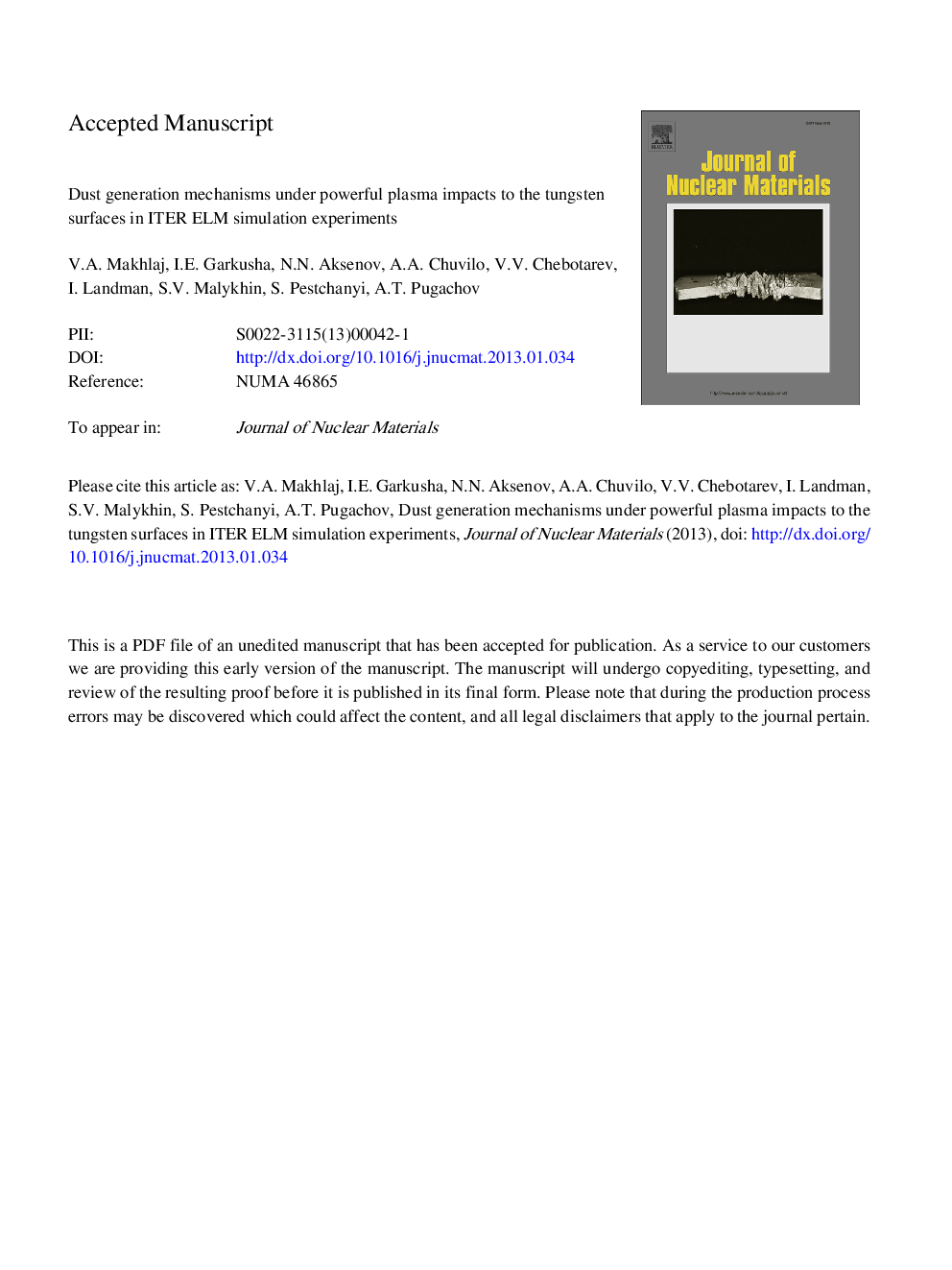| Article ID | Journal | Published Year | Pages | File Type |
|---|---|---|---|---|
| 10644982 | Journal of Nuclear Materials | 2013 | 12 Pages |
Abstract
In recent tokamak simulation experiments with the QSPA Kh-50 facility several mechanisms of dust generation from tungsten surfaces under ITER ELM-like energy loads have been identified. Here cracking and melting are reported. The brittle destruction dominates after a few transient impacts when a network of major cracks forms on the surface. Bifurcation of major cracks results in ejection of dust particles with sizes up to â¼30 μm. Dust generation occurs also after surface melting and following resolidification when fine crack networks along the grain boundaries develop. In this process the destruction is accompanied by bridge formation due to capillary tension across the fine cracks. Next impacts (even weak melt-free ones) can destroy those bridges, which produces considerable amounts of dust particles of nm-size dust. Surface modification after the repetitive plasma pulses also results in creation of nm-size dust.
Related Topics
Physical Sciences and Engineering
Energy
Nuclear Energy and Engineering
Authors
V.A. Makhlaj, I.E. Garkusha, N.N. Aksenov, A.A. Chuvilo, V.V. Chebotarev, I. Landman, S.V. Malykhin, S. Pestchanyi, A.T. Pugachov,
